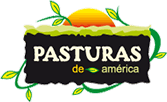There are mixed reports about the advantages and disadvantages of the presence of shade produced by trees over the understory-growing grasses; thus, it is urgent to test grass species and cultivars with potential to develop in shaded conditions associated with trees that occur in silvopastoral systems. The objective of the present study was to identify Brachiaria spp. ecotypes adapted for cultivation under tree shade, typical of silvopastoral systems. The study was conducted at Kampepen ranch, located 14 km south of Merida, Yucatan, Mexico. A factorial 6 (ecotypes) x 2 (sunlight intensities) treatment structure was used, arranged in split-plot design; with sunlight intensity levels being the plots and ecotypes the subplots, with three replications. The ecotypes were T1: Brachiaria hybrid cv. Mulato II, T2: Brachiaria hybrid cv. Cayman Blend, T3: Brachiaria hybrid cv. Talisman (BR05/1467), T4: Brachiaria hybrid cv. Camello Blend, T5: Brachiaria brizantha cv. Marandu and T6 (the control): M. maximus cv. Mombasa, while the two sunlight intensity levels were higher and lower sunlight reductions with respect to full sunlight (25% and 50% light transmission with respect to full sunlight, respectively). Variables were plant height, forage yield and chemical composition; leaf, stem and dead material fractions and leaf:stem ratio; plant canopy cover, plant maturity, and growth rate. Significant (p < 0.050) ecotype x sunlight intensity interactions were recorded for most of the studied variables. Independent of the shading levels, ecotype Talisman showed superior performance compared with the other assessed ecotypes, yielding up to 20 ton ha−1 under the highest light intensity, means across light intensities for crude protein (CP), neutral detergent fiber (NDF), and acid detergent fiber (ADF) of 11.8%, 59.7%, and 34.7%, respectively, and more than 90% plant canopy cover. It is concluded that Talisman has promising characteristics for cultivation under silvopastoral systems, where tree shading is common, in the dry tropics of Yucatan, Mexico.
Productivity, Morphology and Chemical Composition of Brachiaria spp. Ecotypes, under Two Solar Illumination Intensities, in Yucatan, Mexico.
Publicado en Pasturas de América: Diciembre 2022

